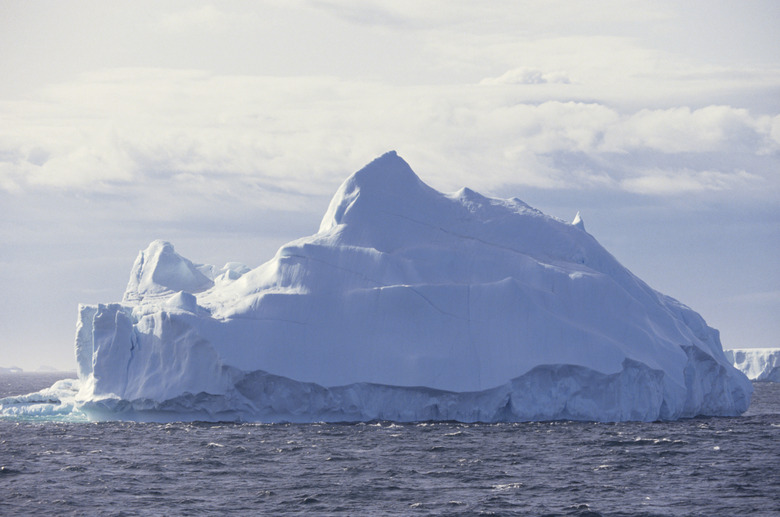The Effect Global Warming Has On Icebergs
Global warming is causing the melting and break-up of glaciers, ice sheets and sea ice along the Antarctic continent, in the Arctic Ocean and across Greenland. As a result, icebergs are being launched into the seas, where their fate is to drift, shatter and slowly melt. These icebergs sometimes carry stranded wildlife, such as seals and polar bears; they also pose hazards for ships.
Antarctic Ice
Antarctic Ice
Massive glaciers and ice shelves along the Antarctic continent extend into the sea, where they "calve" icebergs into the water. One such event occurred in July, 2013, when an ice sheet one-quarter the size of Rhode Island calved off the Pine Island Glacier. Similar events have caused the disintegration of certain ice shelves, sending gigantic icebergs into the ocean. The break-up of Antarctic glaciers and ice shelves is a direct result of global warming, which accelerates calving by raising both air and water temperatures.
Arctic Ice
Arctic Ice
Like the Antarctic, the Arctic is warming more rapidly than the rest of the world. As a result, sea ice is thinning and melting. Seasonal Arctic ice loss has been on the rise for decades: in 2013 it was equivalent to 1.74 times the size of Texas. As sea ice breaks up, it sends more icebergs into the North Atlantic. Less Arctic ice means there is more water exposed. Liquid water is darker and less reflective than ice; thus, it absorbs more heat. This creates a vicious cycle where melting ice fosters more melting. More open water also results in winds and currents that push more icebergs out to sea.
Greenland's Ice
Greenland's Ice
Greenland's ice sheet is shrinking as it melts at an ever-accelerating pace. In 2012 an iceberg twice the size of Manhattan broke free from the Petermann Glacier, close on the heels of an even-larger one that calved from the same glacier in 2010. This latest floating ice island, like its predecessor, is likely to break up as it moves south, ultimately depositing ice along the Canadian coast as far south as Labrador.
Melting and Proliferation of Icebergs
Melting and Proliferation of Icebergs
When icebergs form, new surfaces are exposed to light, water and wind. As a result, break-up and melting occur. Loss of floating ice is estimated to be the equivalent of 1.5 million Titanic-sized icebergs per year. It is likely the number of icebergs is rising, although assessing past numbers is difficult. What is clear is that the rate of calving is going up and the overall amount of Earth's ice is going down.
References
- NASA: Antarctic Glacier Calves Iceberg One-Fourth Size of Rhode Island
- Huffington Post: Global Warming Fears: Giant Iceberg Breaks off from Greenland's Petermann Glacier
- Science Daily: Satellite Observes Rapid Ice Shelf Disintegration in Antarctic
- Climate Central: 2013 Arctic Sea Ice Loss
- Science Daily: Melting Icebergs in Polar Oceans Causing Sea Level Rise Globally, New Assessment Finds
Cite This Article
MLA
Reeder, Elizabeth. "The Effect Global Warming Has On Icebergs" sciencing.com, https://www.sciencing.com/effect-global-warming-icebergs-22880/. 24 April 2017.
APA
Reeder, Elizabeth. (2017, April 24). The Effect Global Warming Has On Icebergs. sciencing.com. Retrieved from https://www.sciencing.com/effect-global-warming-icebergs-22880/
Chicago
Reeder, Elizabeth. The Effect Global Warming Has On Icebergs last modified March 24, 2022. https://www.sciencing.com/effect-global-warming-icebergs-22880/
